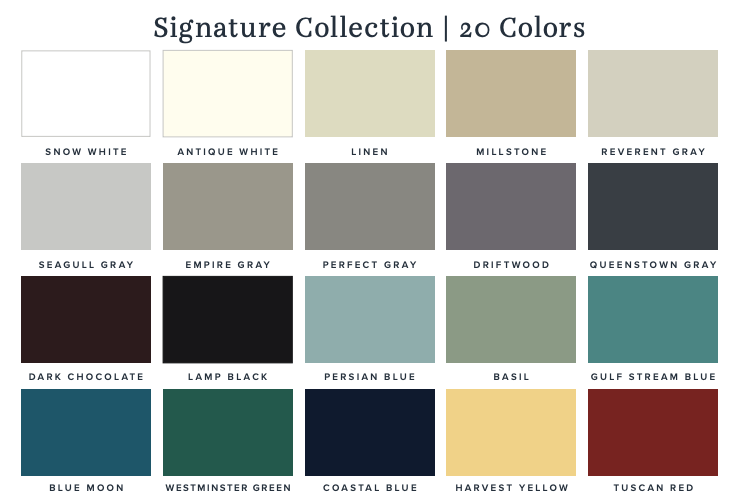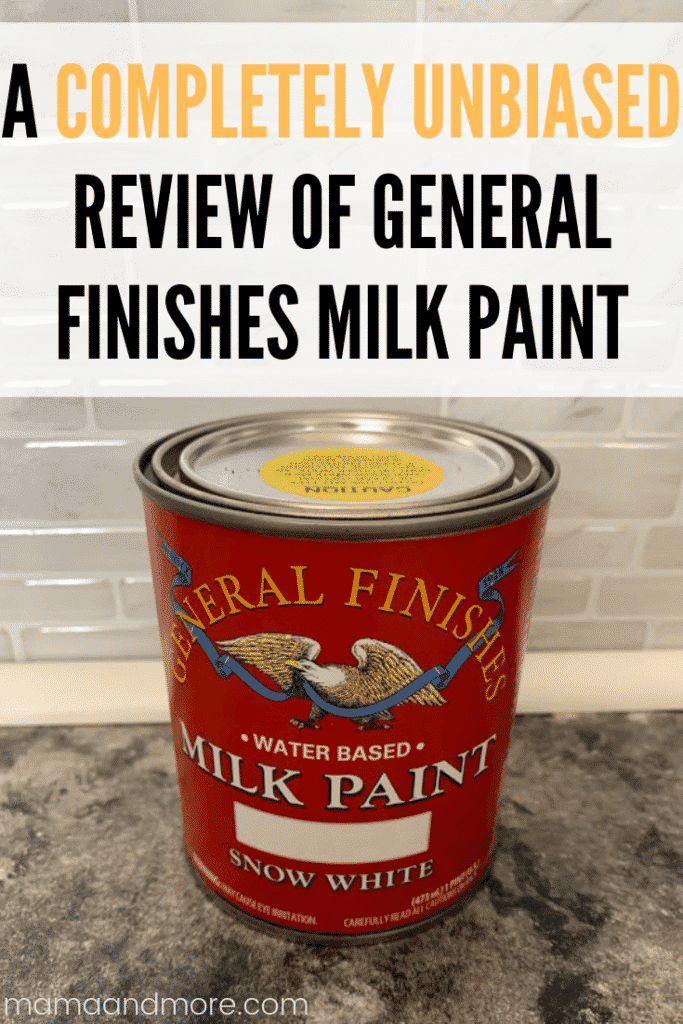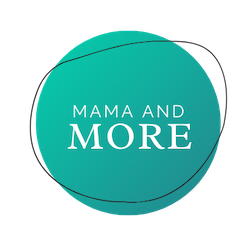Before starting my kitchen transformation, I read tons of General Finishes Milk Paint reviews. I was skeptical since every review I found was glowing… but most of them were sponsored.
After a lot of research, I decided to try the milk paint for my kitchen makeover. The first night of the process, you could hear me exclaiming, “This paint is amazing! Look at the difference already!”
A day and a half later, you could hear me saying, “I have regrets.”
At the very end of the project, all I could say was, “Wow, that was worth it… but thank God it’s over!”
Related: Want another way to make your home reflect YOU–for insanely cheap prices? Check out my printable wall art on Etsy in the Black Door Shop. You can even get 20% off your order with the code 20OFF. 🙂


To read more about this kitchen makeover that only cost me $360, click here.
Why People Love General Finishes Milk Paint
Here are a few of the reasons I found for using milk paint to paint your kitchen cabinets:
- It doesn’t require sanding
- It doesn’t require priming
- The application is quick, easy, and streak free
- The dry time is insanely fast
Now let’s address each of these and see if they are really accurate.
Attraction #1: Milk Paint Doesn’t Require Sanding
All over the world, there are people celebrating when they discover that they can paint their kitchen cabinets without sanding! There are cheers, screams, even tears of joy.
But is it really true?
When I started painting my cabinets, I did not sand and I did not use primer. I was covering my 1960’s orange oak cabinets with Snow White General Finishes milk paint.
It’s a tall order. The ultimate test of milk paint, you could say.
What Happened When I Didn’t Sand

I took this picture after 3 coats of the milk paint. I was pretty frustrated. Applying three coats of paint takes a LONG time, even with a short dry time!
If you aren’t seeing anything concerning in that photo, I understand. I edited this photo to make the grooves stick out more:

The coverage of the white was good, but I was not happy that all of that work was resulting in an extremely uneven finish.
What Happened When I Did Sand

This is a door that I sanded down somewhat heavily with this sanding block before the first coat, and lightly in between coats.
You aren’t seeing things–IT LOOKS AMAZING.
Important Factors to Note about Sanding
I don’t want you to walk away from this saying, “Everyone on the internet has lied to me! You still have to sand with milk paint!” I don’t think that’s true.
Most DIY bloggers who have written about painting their cabinets had significantly newer doors, and higher quality doors.
I truly estimate my doors to be at least 50 years old. And if you are being really honest with yourself, you cannot expect any paint to cover up the imperfections of any type of 50 year old wood.
If you have cabinets like Monica’s at Monica Wants It or Tasha’s at Kaleidoscope Living, you probably will not have to sand.
So it’s okay! Dry your tears and pick yourself up off the ground–there is still hope!
If You Still Have to Sand Your Cabinets
If you have cabinets like mine, then you still shouldn’t give up hope. My advice would be to get a sanding block, because I tried to go without one and it was a huge mistake. And if possible, choose a color other than white. White seems to highlight imperfections and as I’ll discuss below, requires a different sealer.
Just don’t let the idea of sanding intimidate you–I really did not find it to be that much extra work.
Attraction #2: Milk Paint Doesn’t Require Priming
This one is pretty straightforward. I did not end up priming, and you can see by the result of my cabinets that the coverage was great.

However, I do want to note that the complete coverage only came after four coats of paint.
Yes, four. And that’s without even starting on the sealer. So don’t get too carried away by the idea of not priming–you will still be doing multiple coats.
Attraction #3: The Application is Quick, Easy, and Streak Free
Let’s tackle this one in parts.
Is the application easy?
Yes.

Is the application quick?
Painting on the door took the same amount of time I would expect any paint to take.
However, you can dip your brush right in the can, so that made the application convenient.
Is the application streak free?
This one is questionable. Here is what my doors looked like after one coat:

Not pretty.
And as I mentioned before, I ended up having to sand between each coat. However, you shouldn’t go into painting cabinets without primer or sanding and expect the first coat to look beautiful. Look at the coverage after just three coats:

OH YES! That is the transformation picture you were waiting for, right?
So I would say this paint probably results in fewer streaks than other paints, but calling it “streak-free” might be a stretch.
Attraction #4: Milk Paint has an Insanely Fast Dry Time
When I talked to a General Finishes expert, they told me the paint would be dry and ready for another coat after half an hour. I tested this many nights when I was trying to get as much done when the kids were in bed as possible.
And they were 100% correct. This really is a huge benefit of using General Finishes Milk Paint.
Other paints take hours to dry. With the milk paint, I could finish two coats on about ten different doors in a few hours. Painting kitchen cabinets is a long process no matter what you do, but this dry time can significantly simplify the process.
Why People Don’t Love Milk Paint
There are a few well known downsides to using General Finishes Milk Paint. They are:
- It is more expensive.
- It requires multiple coats.
- It requires General Finishes sealer, which is more expensive.
- There is no number 4, but WordPress INSISTS on leaving this number.
Now let’s discuss these and see if they are true.
Problem #1: Milk Paint is more Expensive
The exact prices on Amazon fluctuate, but one pint of General Finishes milk paint generally ranges between $21-$33. I happened to find it at a local hardware store for $18 per pint, which is the absolute cheapest I have found it.
If you check on Etsy, sometimes there are sales where you can get them for $18-$19.
When I search for latex paint at Lowe’s or Home Depot, the results are around $30 for a gallon. However, you would also need primer, which is about $17 for a gallon.
The amount you spend on paint would greatly depend on the size of your kitchen, so I’ll let you do the math on that. Milk paint does appear to be more expensive, but not by a large margin. You would want to take all factors into your decision–if General Finishes makes your project easier and faster, it might be worth a few extra dollars.
Problem #2: Milk Paint Requires Multiple Coats
From my experience, I can say that this one is very, very true. By coat #4 you start thinking about milk paint in your sleep.
However, if you use latex paint, you definitely need to sand thoroughly, do a coat (or two) of primer, wait for it to dry, then finally start painting.
Since I chose to paint white over wood, the process was harder. If you were to choose a different color and you have newer and/or lighter cabinets, you may only need two or three coats! Who knows.
Problem #3: Milk Paint Requires General Finishes Sealer, Which is More Expensive
This is yet another problem I encountered from choosing the color white. I noticed this label on my can of paint after I bought it:

Oh, yay me.
I had already bought General Finishes High Performance Topcoat ($22), so I had to call customer service. They told me I had to get General Finishes Enduro Clear Poly instead, which at the time was $99 for a gallon at my local store.
Nooo thank you.
I ended up ordering a pint off of Etsy for $35 because that was the cheapest I could find it–but I was bitter about it.
My bitterness only increased when I applied it and it is exact same consistency as Minwax Polycrylic. It also did not take much of the topcoat to cover my entire kitchen, so I had almost the entire container leftover.
Sigh.
But if you don’t buy white milk paint, you can just use General Finishes High Performance Topcoat. Problem solved.
What I Loved About Milk Paint
I discovered that there are two advantages to using General Finishes that I had not read about on the internet.
Customer Service
I had to call General Finishes two or three times throughout this process to ask questions, and I was pleasantly surprised with each conversation.
I did not wait on hold at all when I called–it was just like calling a friend. They picked up immediately, and then they talked to me like a friend. They were extremely knowledgable about their products and gave me extra and tips and advice.
When I had to ask about sealing the white paint, the person I was speaking to didn’t immediately know the answer. I really appreciated that he admitted that to me and then went to all lengths to find the correct answer.
Resources on GF Website
Additionally, the General Finishes website has a Design Center, which is kind of Pinterest for milk paint. You can scroll through all the projects that have been done with the different colors of paint and read tutorials. It’s pretty handy.
Great job, General Finishes.
The Power of One Pint
Even though this paint was more expensive per pint, the amount of ground I covered with each pint was pretty amazing.
The number of cabinets and doors I had to paint was pretty high–you can’t fit all of them into one picture. And at the very end of the project, I had used three full pints and a tiny bit of a fourth can. So if your kitchen is smaller than mine, you definitely won’t need four pints.
Custom Colors
Another cool component of General Finishes is that you can mix their colors to make something custom for your project. Considering how many colors they already offer, that pretty much gives you the option of any color you could think of.


I obviously didn’t try that for painting my kitchen cabinets, but I am hoping to try it for another project soon.
General Finishes Milk Paint Review: Final Verdict
After reading all of that, you know that milk paint is not a magic art box–it will not make the process of painting your cabinets just like taking a stroll in a field of flowers.
However, there are a lot of benefits to using milk paint. Even with all the hiccups in my particular cabinet-painting journey, I would most likely choose milk paint again.
Feel free to comment with any questions below! I would love to help you decide if milk paint is right for you.











